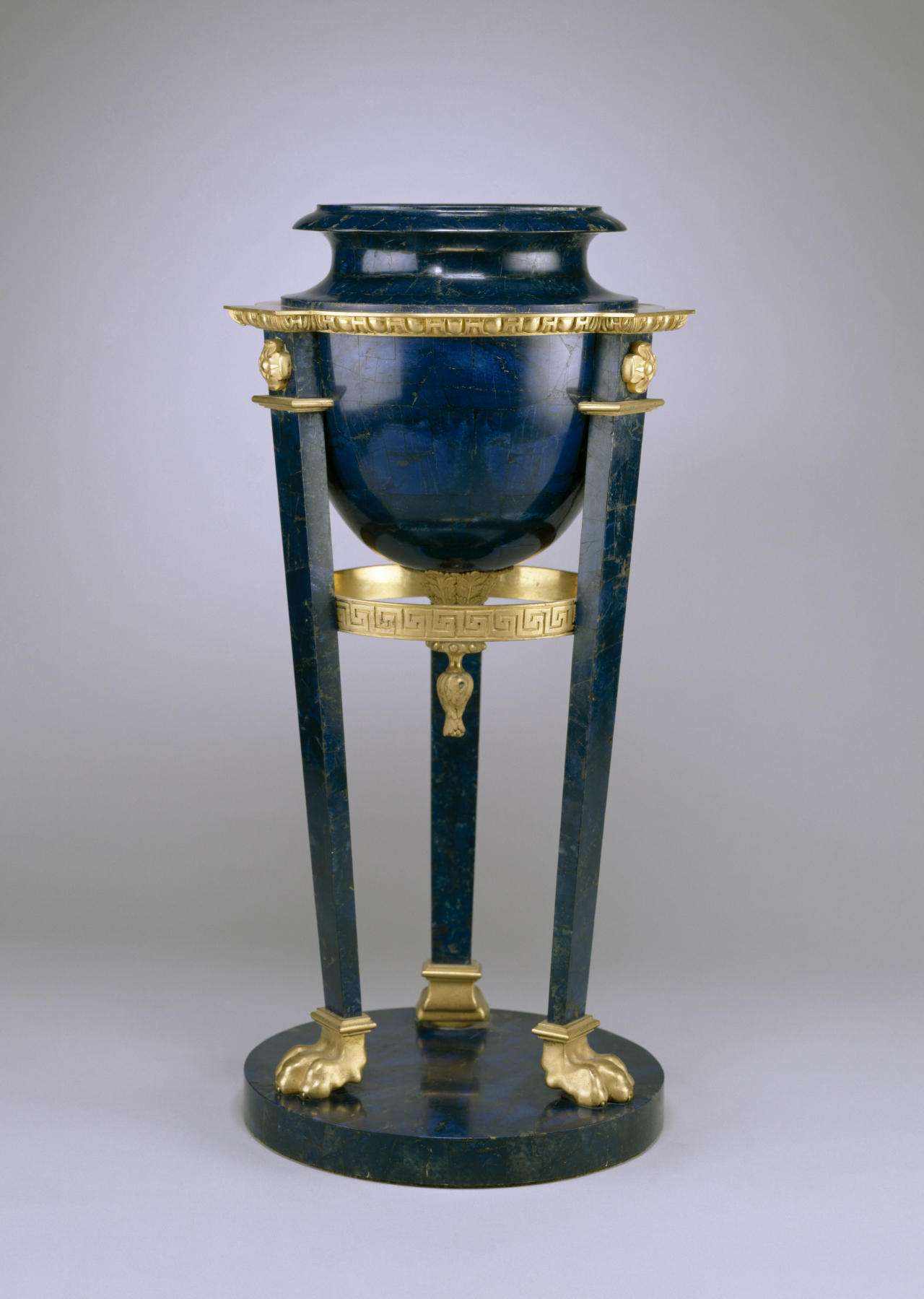Bowl on Tripod Feet in the form of an Incense Burner
(18th and 19th Centuries )
In addition to the French Empire style, other neoclassical trends emanating from England, Germany, and Italy inevitably influenced the development of the decorative arts in St. Petersburg in the early 19th century. This vessel, both in its form--derived from an ancient Roman incense burner--and in its decorative motifs, exemplifies the Russian style "à l'antique" of this period. The classical decoration includes, from top to bottom, an egg and dart band, Roman "paterae" (saucer-shaped appliqués), a circular support with chased Greek key decoration, a finial, and hairy paw feet.
This piece has been veneered using a technique known in Russia as "Roman mosaic." It entails the use of very thin sheets of mineral that are cemented to a metal or stone base. Any interstices left uncovered are filled with a paste of pulverized mineral and cement, and the surfaces are then polished. This technique lent itself especially to lapis lazuli and malachite, minerals that were both too costly and too brittle for large-scale carving. The three major centers of production were the Peterhof stone-cutting factory outside St. Petersburg, a factory in Ekaterinburg in the Ural Mountains, and one in Kolyvan in Siberia.
For this bowl on tripod feet, lapis lazuli has been applied over a bronze base. The mineral was originally imported from Badakshan, Afghanistan, but in 1785, rich deposits were also discovered in the valley of the Sluidianka River in southeastern Siberia. The lapis lazuli's intense blue color is highlighted by the addition of the gilded bronze classical ornaments. A similar piece, veneered in malachite, is preserved in the State Hermitage Museum in St. Petersburg. Perfume burners, small round tables known as "guéridons," and ornamental works of this form were popular in the early 19th century, as is demonstrated by glass examples produced at the Imperial Glass Factory (see A. Chenevière, "Russian Furniture: the Golden Age, 1780-1840," New York, 1988, 163, figs. 161 and 162).
Provenance
Provenance (from the French provenir, 'to come from/forth') is the chronology of the ownership, custody, or location of a historical object. Learn more about provenance at the Walters.
Henry Walters, Baltimore [date and mode of acquisition unknown]; Walters Art Museum, 1931, by bequest.
Exhibitions
| 2017-2018 | Fabergé and the Russian Crafts Tradition: An Empire's Legacy . The Walters Art Museum, Baltimore. |
| 2003-2004 | The Fabergé Menagerie. The Walters Art Museum, Baltimore; Columbus Museum of Art, Columbus; Portland Art Museum, Portland. |
Geographies
Russia (Place of Origin)
Measurements
Overall H: 21 1/8 × Diam. at metal rim with 1 post: 10 3/16 in. (53.6 × 25.9 cm)
Credit Line
Acquired by Henry Walters
Location in Museum
Not on view
Accession Number
In libraries, galleries, museums, and archives, an accession number is a unique identifier assigned to each object in the collection.
In libraries, galleries, museums, and archives, an accession number is a unique identifier assigned to each object in the collection.
41.239


